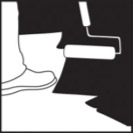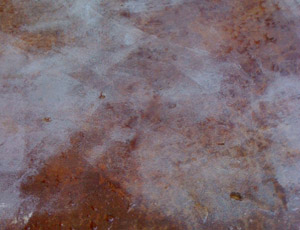 |
PRODUCTS By Market
PRODUCTS By Category
Coatings/Paints
• Bridge Coatings
• Wall Coatings
• Commercial Building Exteriors
• Gateway Specialty Coatings
Cures and Sealers
• DOT Curing Compounds
• Film Forming
• Penetrating
Cementitious Products
• Grouts
• Repair Mortars
Other
• Accelerators and Retarders
• Cleaners and Solvents
• Release and Bonding Agents
• Finishing Aids
Competitor Cross Reference
All Products
RESOURCES
How To Buy Our Products
• Find a Distributor
• Find a Contractor
Specifications
• DOT Specifications
• Architectural & Engineering Specifications
Education
• Training
• Newsletter
Case Studies
Toll-blending & Custom Formulations
Log In To MyChemMasters
PRODUCT SUPPORT
Product Recommendations
• Film Forming Sealers | Cure & Sealers
• Penetrating Sealers
Common Problems & Solutions
Product Shelf Life
Safety
VOC Regulations
Product Images
Literature
Terms & Conditions
Warranty & Limitation of Liability
ABOUT
About ChemMasters
A History of Innovation in Concrete Chemicals
LEED Environmental Stewardship
Social Responsibility
• Murphy Family Foundation
• ChemMasters Matching Donations
Our Family of Brands
VIDEOS
CONTACT
CAREERS
DATA SHEETS
FACEBOOK
TWITTER
LINKEDIN
Home › Newsletters › July 2013 › Frequently Asked Sealer Questions
 Seal the Deal
Seal the Deal
ChemMasters Newsletter: Vol 1 Issue 5
July 2020
May 2020
September 2019
June 2019
March 2019
August 2016
January 2016
October 2015
July 2015
October 2014
April 2014
November 2013
July 2013
June 2013
Seal the Deal is intended to be an informative and educational publication for ChemMasters’ network of independent manufacturer’s representatives, distributors and contractors. We don’t want to make you chemical engineers, but we do want to help you feel better informed and more comfortable discussing construction chemicals. If there are specific products or topics you would like to see addressed in a future issue, please contact John Fauth.
Frequently Asked Sealer Questions

What happened to the gloss?
UV sunlight damages film forming sealers the same way it damages your skin. Over time, sealers develop micro cracking and pitting that detract from gloss and appearance. Although plenty of sealer may remain, it has lost the initial cosmetic appearance and may need repair.When do I need to reapply sealer?
That depends upon your expectations of the sealer. If your intention is to protect your concrete from water penetration, freeze/thaw damage and staining, then it needs to be reapplied when the film is no longer there. If you have decorative concrete that relies upon gloss and color development from the sealer, it should be addressed when the appearance no longer suits your taste. At this point the question you need to ask yourself is whether you need to repair existing sealer, or reseal.How do I tell if there’s any sealer still left on my concrete?
There are two easy ways to assess whether your concrete is adequately sealed for protection. One is to place some water on the concrete and observe whether the concrete darkens, indicating it has been absorbed. If water is able to absorb, there is insufficient sealer to protect your concrete.A second option is to drip a small amount of household vinegar on your concrete. Vinegar will react with unsealed concrete to bubble or fizz, indicating it should be resealed. If there’s no bubbling or fizzing, your concrete is sealed.
Should I reseal my concrete, or repair the weathered sealer that’s already there?
The answer to this question really depends upon how much sealer remains on the concrete. If concrete is resealed too frequently (every year, for example), the film thickness builds up over time like wax buildup on your coffee table. Increased film thickness will reduce breathability and can cause a whole host of problems, including whitening and delamination. If there’s already a healthy sealer film, it may be best to restore the gloss with a product like ChemMasters’ Gloss Restorer SRT and avoid the problems associated with sealer buildup.Why did my sealer turn white?


Tech Tip: If your sealer is solvent-based, use a xylene (or xylol) wash to re-solvate and redeposit sealer onto the concrete surface. If your sealer is water-based, this solution may work within the first 24 to 48 hours of sealer application.
Why are there bubbles in my sealer?
Bubbles form for a variety of reasons (see June, 2013 article on bubble formation) but are commonly associated with fast solvent evaporation, over application of sealer, resealing, and a variety of environmental factors including solar energy and air movement. Bubble formation is more frequent in low-VOC formulations in states with restrictive VOC limitations.Tech Tip: A light xylene (or xylol) mist will often “knock down” the bubbles. Gentle back rolling may be required as well.
Why does my sealer appear milky or cloudy?
Sealer that appears milky or cloudy may have several causes. If your sealer is water-based, it may indicate the application took place when the concrete or ambient air temperature were too low (water-based sealers require both substrate and ambient air temperatures above 50° F). Water trapped in the sealer as it cures can also cause a milky or cloudy appearance.Tech Tip: If your sealer is solvent-based, use a xylene (or xylol) wash to re-solvate and redeposit sealer onto the concrete surface. If your sealer is water-based, this solution may work within the first 48 hours of sealer application.
What caused my sealer to turn yellow/brown?
Some sealers use resins that are not light stable. Long term exposure to UV sunlight can cause them to become yellow or brown in appearance.Tech Tip: Don’t reseal over a sealer that has turned yellow or brown. Allow the sealer to completely wear away, and then apply a sealer with a fully non-yellowing resin. Stripping sealers is a difficult process that often results in loss of nearby landscaping, lawn, etc. and should be considered as a last resort.
Why is my sealer “blotchy” or uneven in appearance?
One cause of blotchy or uneven appearance is application of a sealer on freshly poured concrete. New concrete is very high in alkalinity, and requires a cure & seal product rather than a simple sealer. Another cause can be uneven application.Tech Tip: Using a xylene (or xylol) wash to more evenly distribute the sealer will improve the appearance of solvent-based sealers, or water-based sealers within 48 hours of application.
Why does my sealer appear to have dark “stripes” or roller marks?
Sealers, particularly solvent-based sealers, will darken concrete. If unevenly applied, it will create light areas where there is less sealer, and darker areas where there’s more. If applied by sprayer, it may appear like “stripes”. Uneven roller application may leave darkened roller marks.Tech Tip: Apply sealer evenly to avoid uneven appearance. Always maintain adequate air pressure when spray applying. Use a xylene (or xylol) wash to more evenly distribute the sealer will improve the appearance of solvent-based sealers, or water-based sealers within 48 hours of application.
Should I use a water-based or solvent-based sealer?
Both have different aesthetic and performance characteristics that will be desirable to different customers for different applications. Those differences can be expressed in the form of pros and cons:Water-Based Pros:
- Typically less expensive
- Generally more environmentally friendly
- Non-flammable, low odor
- Minimal darkening of concrete
- Easier to use at higher temperatures
- More chemical resistant
Water-Based Cons:
- Not usable at low temp
- Lower gloss
- More sensitive to some environmental conditions such as high humidity and low temperature
Solvent-Based Pros:
- Develops a deeper, richer gloss
- Will “wet out” antiquing release on stamped concrete
- Increased color development on colored concrete
- Can be used & stored at lower temps
- Improved recoatability
Solvent-Based Cons:
- More expensive
- Faster evaporating, less user friendly at higher temperatures
- Darkens light concrete
- Solvent fumes
July 2020
May 2020
September 2019
June 2019
March 2019
August 2016
January 2016
October 2015
July 2015
October 2014
April 2014
November 2013
July 2013
June 2013
Seal the Deal is intended to be an informative and educational publication for ChemMasters’ network of independent manufacturer’s representatives, distributors and contractors. We don’t want to make you chemical engineers, but we do want to help you feel better informed and more comfortable discussing construction chemicals. If there are specific products or topics you would like to see addressed in a future issue, please contact John Fauth.
© 2025 ChemMasters, Inc.
Silencure, Polyseal, Traz, Aquanil, Spall Guard, Chemisil, EZ Strip Cure, SafeSeal, Spray Film, DuraShield SRT, Slip Stop and Exposee are trademarks of ChemMasters, Inc. ChemMasters and Safe-Cure are registered trademarks of ChemMasters, Inc.
300 Edwards Street, Madison, Ohio 44057
Phone 440.428.2105 - 800.486.7866
Fax 440.428.7091
Silencure, Polyseal, Traz, Aquanil, Spall Guard, Chemisil, EZ Strip Cure, SafeSeal, Spray Film, DuraShield SRT, Slip Stop and Exposee are trademarks of ChemMasters, Inc. ChemMasters and Safe-Cure are registered trademarks of ChemMasters, Inc.
300 Edwards Street, Madison, Ohio 44057
Phone 440.428.2105 - 800.486.7866
Fax 440.428.7091
© 2025 ChemMasters, Inc.
Silencure, Polyseal, Traz, Aquanil, Spall Guard, Chemisil, EZ Strip Cure, SafeSeal, Spray Film, DuraShield SRT, Slip Stop and Exposee are trademarks of ChemMasters, Inc. ChemMasters and Safe-Cure are registered trademarks of ChemMasters, Inc.
Silencure, Polyseal, Traz, Aquanil, Spall Guard, Chemisil, EZ Strip Cure, SafeSeal, Spray Film, DuraShield SRT, Slip Stop and Exposee are trademarks of ChemMasters, Inc. ChemMasters and Safe-Cure are registered trademarks of ChemMasters, Inc.

300 Edwards Street, Madison, Ohio 44057
Phone 440.428.2105 - 800.486.7866
Fax 440.428.7091
ERISA Documents for Welfare Benefit Plan
Phone 440.428.2105 - 800.486.7866
Fax 440.428.7091
ERISA Documents for Welfare Benefit Plan
